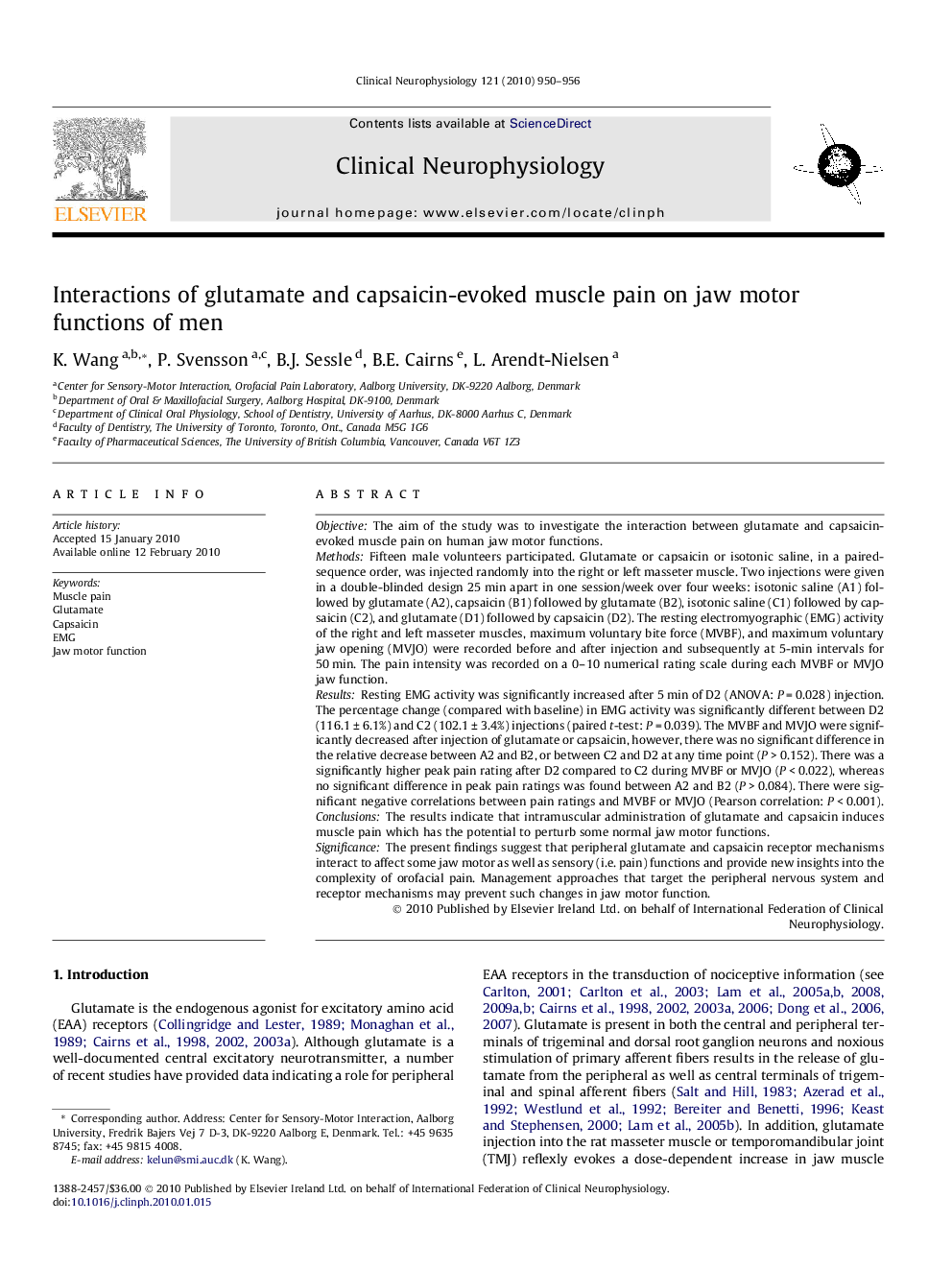| Article ID | Journal | Published Year | Pages | File Type |
|---|---|---|---|---|
| 3045692 | Clinical Neurophysiology | 2010 | 7 Pages |
ObjectiveThe aim of the study was to investigate the interaction between glutamate and capsaicin-evoked muscle pain on human jaw motor functions.MethodsFifteen male volunteers participated. Glutamate or capsaicin or isotonic saline, in a paired-sequence order, was injected randomly into the right or left masseter muscle. Two injections were given in a double-blinded design 25 min apart in one session/week over four weeks: isotonic saline (A1) followed by glutamate (A2), capsaicin (B1) followed by glutamate (B2), isotonic saline (C1) followed by capsaicin (C2), and glutamate (D1) followed by capsaicin (D2). The resting electromyographic (EMG) activity of the right and left masseter muscles, maximum voluntary bite force (MVBF), and maximum voluntary jaw opening (MVJO) were recorded before and after injection and subsequently at 5-min intervals for 50 min. The pain intensity was recorded on a 0–10 numerical rating scale during each MVBF or MVJO jaw function.ResultsResting EMG activity was significantly increased after 5 min of D2 (ANOVA: P = 0.028) injection. The percentage change (compared with baseline) in EMG activity was significantly different between D2 (116.1 ± 6.1%) and C2 (102.1 ± 3.4%) injections (paired t-test: P = 0.039). The MVBF and MVJO were significantly decreased after injection of glutamate or capsaicin, however, there was no significant difference in the relative decrease between A2 and B2, or between C2 and D2 at any time point (P > 0.152). There was a significantly higher peak pain rating after D2 compared to C2 during MVBF or MVJO (P < 0.022), whereas no significant difference in peak pain ratings was found between A2 and B2 (P > 0.084). There were significant negative correlations between pain ratings and MVBF or MVJO (Pearson correlation: P < 0.001).ConclusionsThe results indicate that intramuscular administration of glutamate and capsaicin induces muscle pain which has the potential to perturb some normal jaw motor functions.SignificanceThe present findings suggest that peripheral glutamate and capsaicin receptor mechanisms interact to affect some jaw motor as well as sensory (i.e. pain) functions and provide new insights into the complexity of orofacial pain. Management approaches that target the peripheral nervous system and receptor mechanisms may prevent such changes in jaw motor function.
